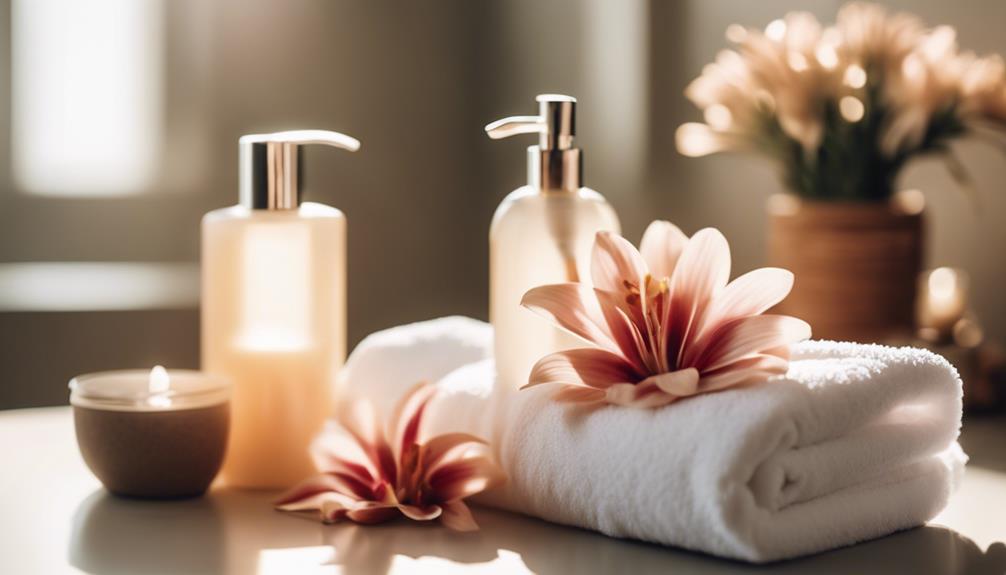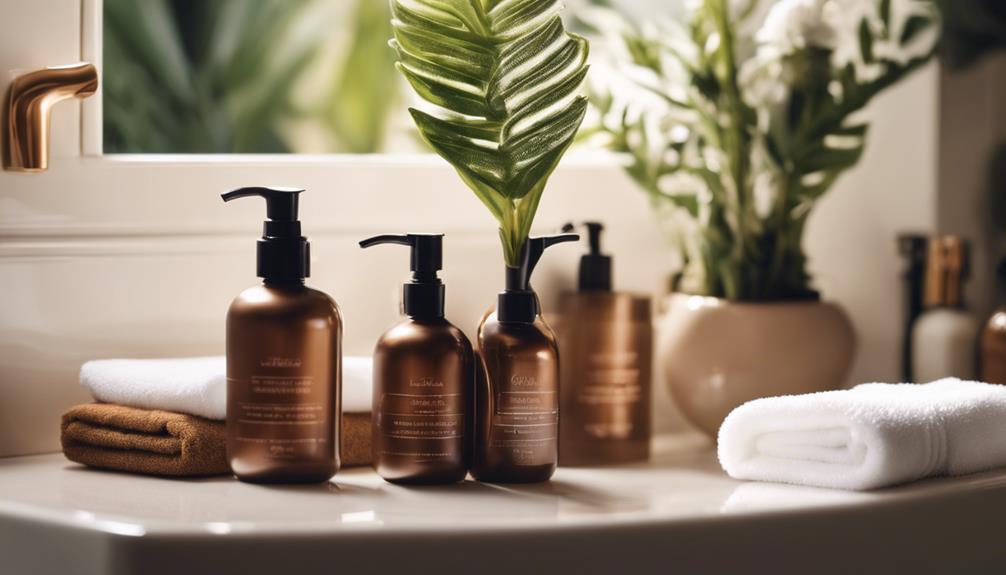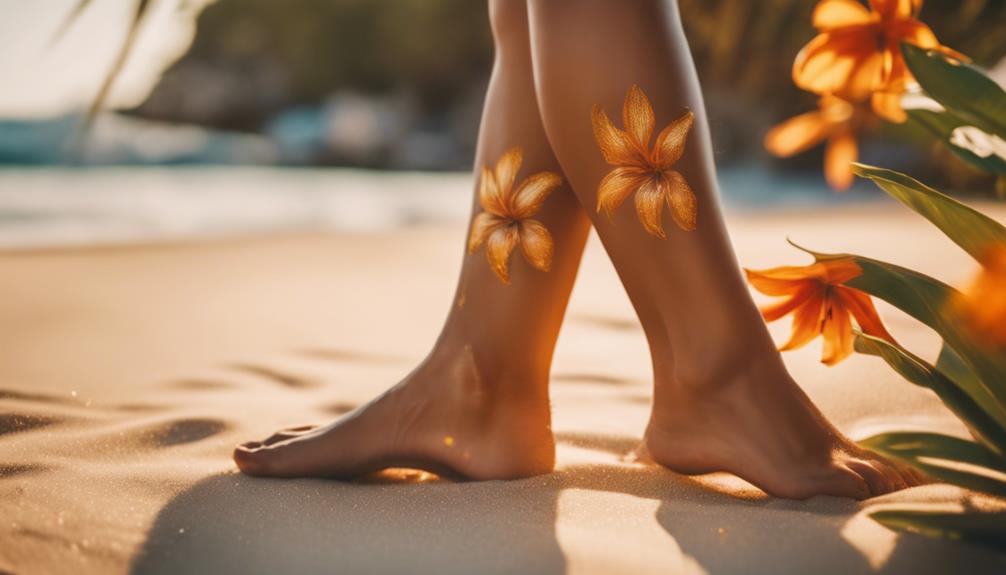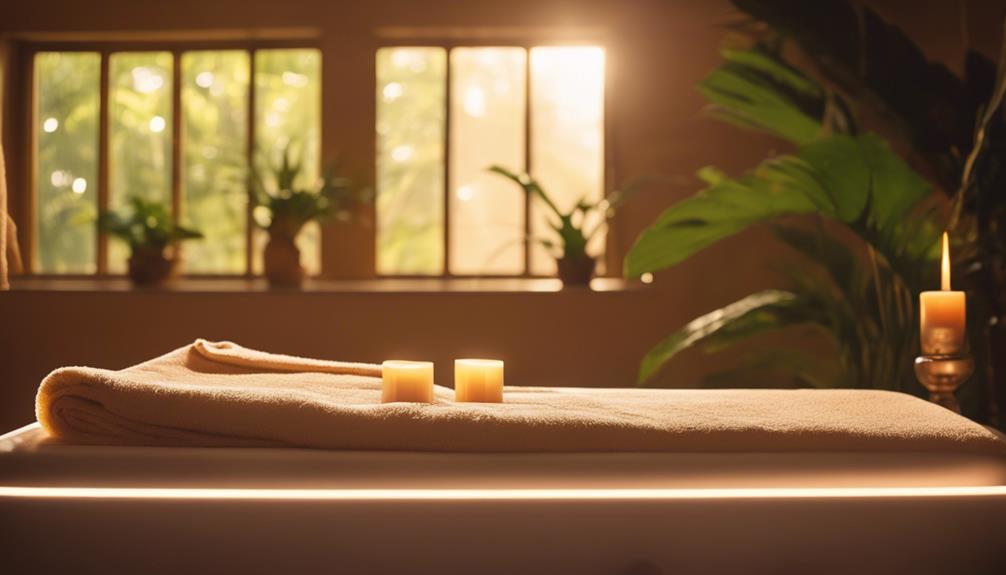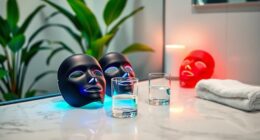Revealing a salon-quality tan starts with pre-tan moisturizing. By hydrating your skin, you maximize its smoothness, helping tanning products absorb evenly and reducing patchiness. Choose a moisturizer that suits your skin type and apply it the night before for best results. Use gentle, circular motions to cover all areas, especially drier spots like elbows and knees. Regular moisturizing not only enhances your tan's vibrancy but also prolongs its life, ensuring a uniform fade. Commit to this routine, and you'll enjoy a radiant glow. Keep exploring more tips to elevate your tanning game!
Key Takeaways
- Pre-tan moisturizing ensures smooth application, allowing tanning products to absorb evenly and reducing patchiness for a salon-quality finish.
- Choosing the right moisturizer, tailored to your skin type, enhances tan vibrancy and overall skin health for longer-lasting results.
- Applying moisturizer the night before tanning maximizes absorption, setting the stage for an even and radiant tan.
- Regular hydration post-tan maintains a uniform fade and prevents dry patches, ensuring your tan looks fresh and flawless longer.
Importance of Pre-Tan Moisturizing
Pre-tan moisturizing is vital because it maximizes your skin for a smooth application and sets the perfect stage for achieving that golden glow.
When your skin's hydrated, it absorbs the tanning product evenly, reducing the risk of patchiness.
You'll notice that well-moisturized skin enhances the longevity of your tan, allowing it to last longer and fade more uniformly.
By committing to a daily hydration routine leading up to your tanning session, you're not just prepping your skin; you're ensuring it remains in ideal condition.
Statistics show that proper skin prep greatly improves tan durability, so don't skip this essential step.
Invest in pre-tan moisturizing for a flawless, radiant finish that'll make your tan truly shine.
Choosing the Right Moisturizer
Selecting the right moisturizer is essential for enhancing your tan and ensuring your skin stays healthy and radiant. Look for tan extenders and daily moisturizers that suit your skin type and tanning goals. Ingredients play a significant role, so choose products with nourishing extracts, preferably paraben-free and gluten-free.
Here's a quick reference table to help you choose:
| Skin Type | Recommended Ingredients |
|---|---|
| Oily | Lightweight gel, Aloe Vera |
| Dry | Creamy formulas, Shea Butter |
| Sensitive | Fragrance-free, Chamomile |
| Combination | Balanced hydrators, Jojoba Oil |
Best Timing for Moisturizing
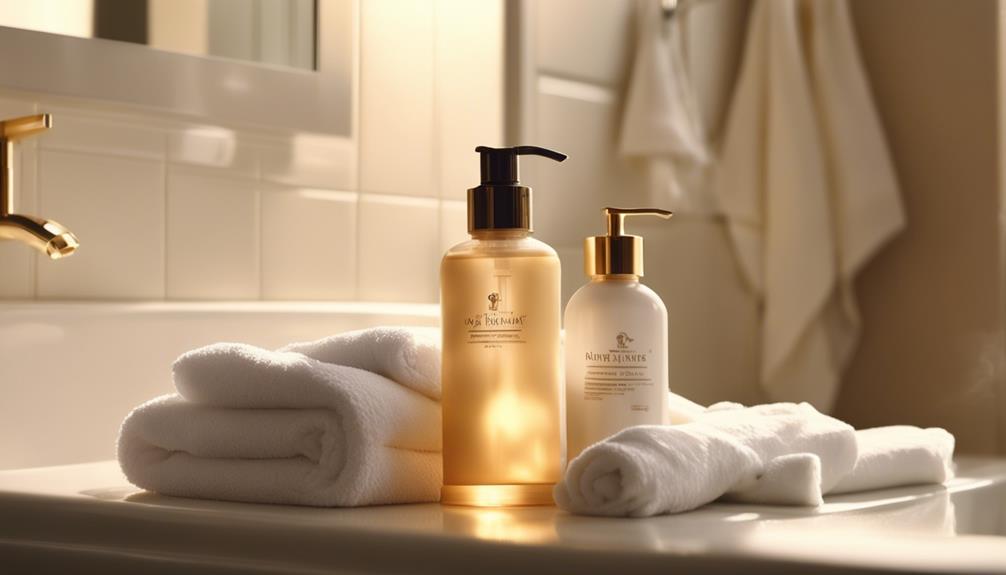
Knowing when to moisturize can greatly impact your tanning results, ensuring your skin is perfectly prepared for that radiant glow.
Ideally, you should apply your moisturizer the night before your tanning session. This allows your skin ample time to absorb the product, creating a smooth canvas.
If you prefer morning application, make sure to give it enough time to soak in before you start tanning.
After your tan, daily moisturizing is essential to maintain even fading and hydration.
Avoid hot showers post-tan, opting for cool water instead to support your skin's recovery.
Techniques for Effective Application
To achieve the best results when applying moisturizer, start by using gentle, circular motions to guarantee even coverage and absorption into your skin.
Focus on areas that tend to be drier, like elbows and knees, as they absorb more product.
Don't forget to apply moisturizer to your hands and feet, assuring a uniform tan.
Use a small amount at a time and layer as needed; this prevents excess product from clumping.
Allow the moisturizer to fully absorb before applying any tanning products.
If you're prepping for a spray tan, wait at least 15-30 minutes after moisturizing to confirm your skin is ready.
Benefits of Regular Moisturizing
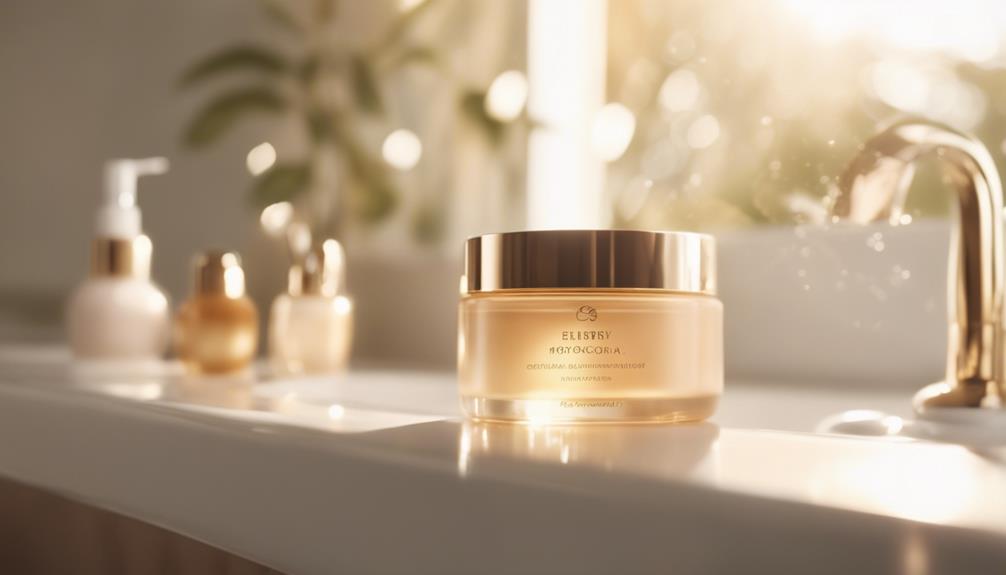
Regularly moisturizing your skin not only keeps it hydrated but also enhances the vibrancy and longevity of your tan.
When you maintain a consistent moisturizing routine, your skin looks radiant and feels soft, providing a perfect base for that sun-kissed glow.
Hydrated skin prevents patchiness, ensuring an even fade as your tan wears off.
Quality moisturizers also support skin health, helping it recover from any potential drying effects of tanning products.
By committing to regular moisturizing, you not only prolong your spray tan but also contribute to your skin's overall appearance.
This simple step can make a significant difference, leaving you with a stunning, glowing complexion that turns heads and boosts your confidence.
Considerations for Tanning Practices
While maintaining a moisturizing routine is essential for enhancing your tan, there are several important considerations to keep in mind when engaging in tanning practices. Here are some key points to remember:
Choose the right products: Use moisturizers specifically designed for tanning to maximize results.
Timing matters: Apply moisturizer the night before or a few hours prior to tanning for best absorption.
Stay hydrated: Drink plenty of water to keep your skin hydrated from the inside out.
Know your skin type: Tailor your products and practices to suit your unique skin needs.
Be mindful of sun exposure: If tanning outdoors, don't forget to apply sunscreen to protect your skin.
Keeping these factors in mind will help you achieve that flawless, sun-kissed glow!
Alternatives to Traditional Tanning
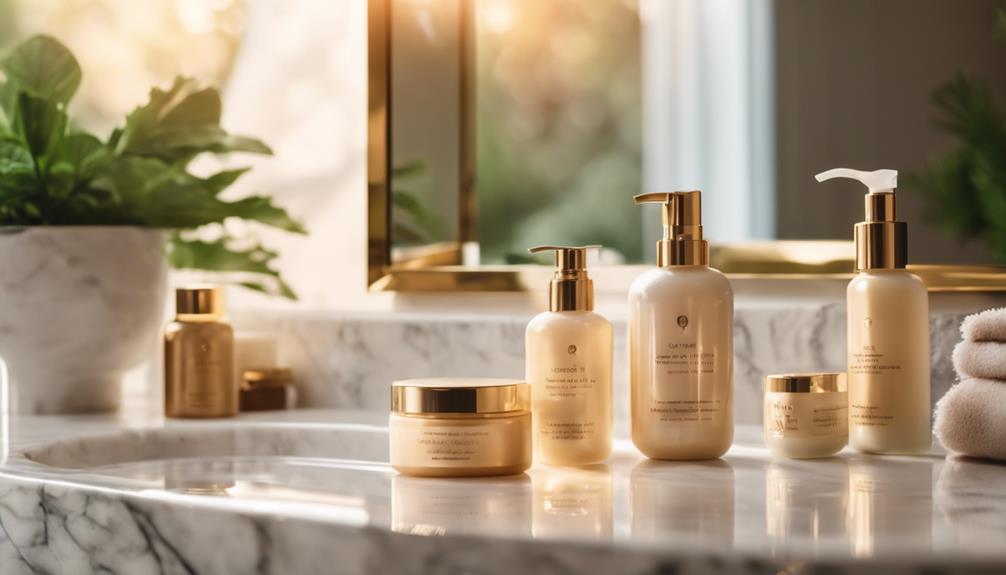
Explore various alternatives to traditional tanning methods that can give you a beautiful, sun-kissed look without the risks associated with UV exposure.
Self-tanning lotions and mousses are popular choices, allowing you to control the depth of your tan. Simply apply them evenly for a natural glow.
Tanning sprays offer a quick application and even coverage, perfect for those short on time.
For a more temporary option, bronzing powders and body sprays can enhance your skin tone instantly.
Consider using tinted moisturizers that provide a subtle glow while hydrating your skin.
Frequently Asked Questions
Can I Use Body Oil Instead of Moisturizer Before Tanning?
You shouldn't use body oil instead of moisturizer before tanning. Oils can create a barrier, preventing even application and absorption. Stick to a lightweight, hydrating moisturizer for the best results and a flawless tan.
How Often Should I Moisturize After a Spray Tan?
“An ounce of prevention is worth a pound of cure.” You should moisturize daily after a spray tan. This keeps your skin hydrated, extends your tan's life, and prevents uneven fading. Consistency is key!
Is It Safe to Tan After Moisturizing?
Yes, it's safe to tan after moisturizing, but make sure your skin absorbs the moisturizer completely first. This way, you'll create a smooth canvas for an even application and enhance your tanning results.
Can I Apply Makeup After Moisturizing Pre-Tan?
Yes, you can apply makeup after moisturizing pre-tan. Just make certain your moisturizer absorbs fully first. This guarantees a smooth application and helps your tan look even and radiant once you've finished.
Do Different Skin Types Require Different Moisturizing Techniques?
You might've noticed how your skin reacts differently to products. Absolutely, different skin types require tailored moisturizing techniques. Understanding your unique needs guarantees ideal hydration, enhancing both your skin's health and the effectiveness of your tanning process.
Conclusion
To sum up, pre-tan moisturizing is the secret ingredient to revealing your most radiant glow.
Think of it as laying a golden foundation before painting your masterpiece.
By choosing the right products and timing, you'll not only enhance your tan but also embrace the confidence that comes with beautifully hydrated skin.
So, make moisturizing a part of your tanning routine, and watch as your sun-kissed look transforms into a stunning work of art that turns heads.
